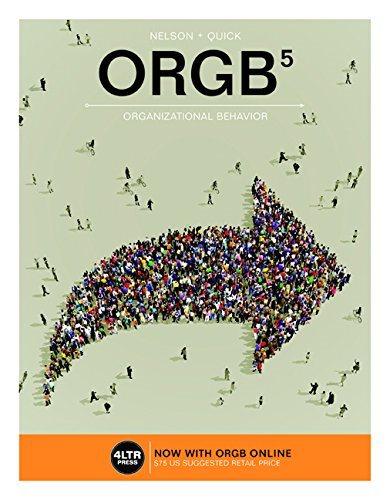Sarah Kovacs supervises a team of ten employees in the human resources department of Paddington, Inc. She
Question:
Sarah Kovacs supervises a team of ten employees in the human resources department of Paddington, Inc. She strives to match each of her team member’s strengths with their allotted tasks. For the last five years, Sarah has created a pleasant working environment for everyone.
The newest member of her team, Kim Evans, excels at meeting deadlines and works at a level above her peers. However, since she was hired a year ago, Kim has managed to find problems or downsides to everything, and never fails to share her moody nit-picking with others. Often, Kim points out legitimate issues that need to be dealt with, but she does it with an air of negativity and misery that stymies the team’s enthusiasm and puts Sarah in a challenging position from which she has to motivate her team. Sarah’s frustration has become difficult to contain, and meetings with Kim have not produced any change in her attitude.
Last week in her supervisor’s meeting, Sarah became aware of a position opening up in the marketing department that requires the skills at which Kim excels. The position hasn’t been advertised yet, but Sarah thinks that she could fast-track Kim into an interview.
However, Sarah knows that Kim’s negative affect will possibly be an even greater problem for the marketing department, because of that team’s interaction with Paddington’s clientele. Not only could Kim sour her new team’s relationships, she could pass that negativity onto the organization’s current and potential clients. Of course, Sarah has never seen Kim deal with clients, but Kim may have the ability to set aside her negative outlook when necessary. But she’s certainly seen Kim openly criticize Paddington’s policies to her peers and in front of Sarah and other managers. She’s heard Kim complain about workloads, vacation time, cafeteria food, the weather …
But, if Kim gets the position on the marketing team, the HR team could begin to function again like a cohesive group with focus and vision. Sarah is not sure what would be best for Paddington and her department or what she should do.
Questions:
1. Using consequential, rule-based, and character theories, evaluate Sarah’s options.
2. What should Sarah do? Why?
Step by Step Answer:

ORGB Organizational Behavior
ISBN: 9781305663916
5th Edition
Authors: Debra L. Nelson, James Campbell Quick





